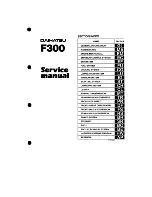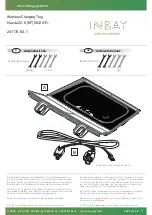
Hot exhaust system
Hot exhaust system
High temperatures are generated in the
exhaust system.
Do not remove the heat shields installed and
never apply undercoating to them. When driv‐
ing, standing at idle and while parking, take care
to avoid possible contact between the hot ex‐
haust system and any highly flammable materi‐
als such as hay, leaves, grass, etc. Such contact
could lead to a fire, and with it the risk of serious
personal injury as well as property damage.
Do not touch hot exhaust pipes; otherwise, there
is the danger of getting burned.◀
Diesel particulate filter
The diesel particulate filter collects soot parti‐
cles and burns them periodically at high tem‐
peratures.
During the cleaning time of several minutes, the
following may occur:
▷
Temporarily, the engine may run less
smoothly.
▷
Noises and a slight amount of smoke com‐
ing from the exhaust until shortly after the
engine is shut down.
▷
A somewhat higher engine speed is neces‐
sary to achieve the accustomed perform‐
ance.
Mobile communication devices in the
vehicle
Mobile communication devices in the ve‐
hicle
It is advised that you do not use mobile commu‐
nication devices, e.g., mobile phones, inside the
vehicle without connecting them directly to the
external antenna. Otherwise, the vehicle elec‐
tronics and mobile communication devices can
interfere with each other. In addition, there is no
assurance that the radiation generated during
transmission will be discharged from the vehicle
interior.◀
Hydroplaning
On wet or slushy roads, a wedge of water can
form between the tires and road surface.
This phenomenon is referred to as hydroplan‐
ing. It is characterized by a partial or complete
loss of contact between the tires and the road
surface, ultimately undermining your ability to
steer and brake the vehicle.
Hydroplaning
When driving on wet or slushy roads, re‐
duce your speed to prevent hydroplaning.◀
Driving through water
Drive though calm water only if it is not deeper
than 9.8 inches/25 cm and at this height, no
faster than walking speed, up to 6 mph/10 km/h.
Adhere to water depth and speed limita‐
tions
Do not exceed this water depth and walking
speed; otherwise, the vehicle's engine, the elec‐
trical systems and the transmission may be
damaged.◀
Braking safely
Your vehicle is equipped with ABS as a standard
feature.
Applying the brakes fully is the most effective
way of braking in situations when this is neces‐
sary.
The vehicle maintains steering responsiveness.
You can still avoid any obstacles with a minimum
of steering effort.
Pulsation of the brake pedal and sounds from
the hydraulic circuits indicate that ABS is in its
active mode.
Seite 159
Things to remember when driving
Driving tips
159
Online Edition for Part no. 01 40 2 917 801 - II/13
Summary of Contents for 3 SERIES SEDAN - PRODUCT CATALOGUE
Page 2: ......
Page 10: ...Online Edition for Part no 01 40 2 917 801 II 13 ...
Page 28: ...Online Edition for Part no 01 40 2 917 801 II 13 ...
Page 156: ...Online Edition for Part no 01 40 2 917 801 II 13 ...
Page 169: ...Saving fuel Driving tips 169 Online Edition for Part no 01 40 2 917 801 II 13 ...
Page 170: ...Online Edition for Part no 01 40 2 917 801 II 13 ...
Page 223: ...Care Mobility 223 Online Edition for Part no 01 40 2 917 801 II 13 ...
Page 224: ...Online Edition for Part no 01 40 2 917 801 II 13 ...
Page 231: ...Technical data Reference 231 Online Edition for Part no 01 40 2 917 801 II 13 ...
Page 241: ......
















































